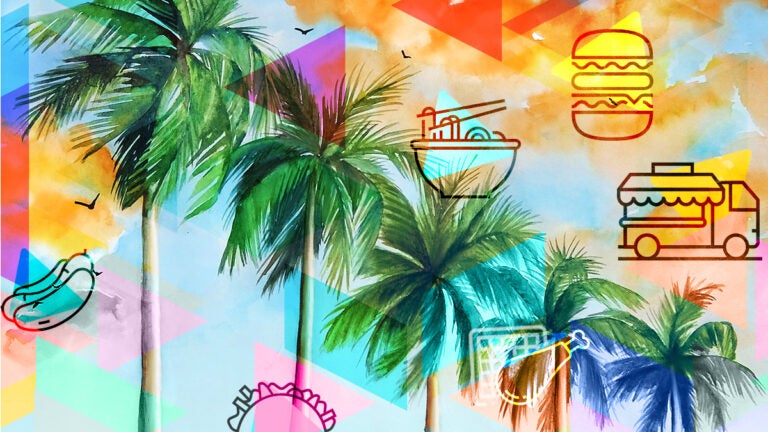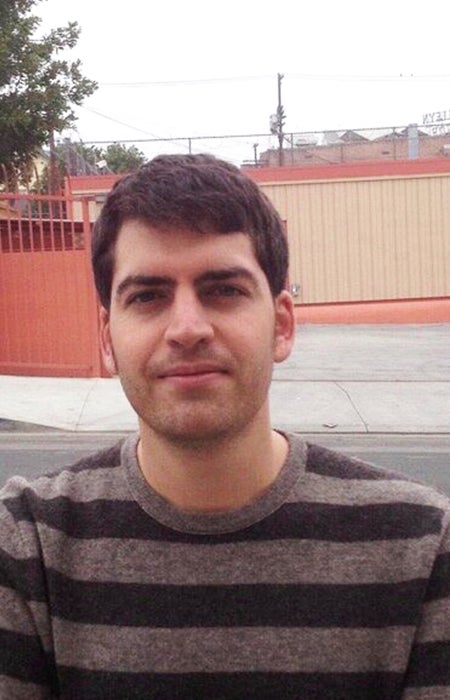
For one summer college course, food provides a passport to Los Angeles
“And it turns out food is a pretty good prism through which to view humanity.” — Jonathan Gold
If you want to get to know Los Angeles, start with its food. Because food isn’t just about eating. It’s about who we are and how we live.
From a pupuseria in Pacoima to a bistro in Beverly Hills, from a falafel shop in Tarzana to a Sichuan eatery in San Gabriel, Los Angeles County’s food choices reflect its vast diversity of people and cultures. Understand its food and you can begin to understand not only its people but where they live, where they come from and how L.A.’s unrelenting self-reinvention is shaping their lives — for better and worse.
That’s the premise of a Maymester course titled From Pueblo to Postmates: Food and Class in Los Angeles, taught by Michael Petitti, an assistant professor (teaching) in the Thematic Option honors program at USC Dornsife College of Letters, Arts and Sciences.
“I wanted to do a course … that looked at food but didn’t sidestep issues like homelessness, food insecurity, poverty, class,” Petitti said. “This is not just a food tour of L.A. It’s what made the city and what it is right now in the 21st century. Every area and type of cuisine has different kinds of stories about it.”
The class, which Petitti has taught every spring for the past three years, begins with a general discussion about Los Angeles. Then he starts taking his students to specific neighborhoods — East L.A., South L.A., Koreatown, the San Gabriel Valley — to learn about the food, people and issues in each location.

Michael Petitti took students on a whirlwind virtual tour of L.A.’s culinary hot spots. (Photo: Courtesty of Michael Petitti.)
Students dive into literature, news reporting, music, television programs, movies and podcasts to learn all they can about the cultural crazy quilt that is L.A. All of which is augmented by guest lecturers. Of course, the field trips were especially welcomed by students because they included eating some of L.A. most inventive and scrumptious food.
During their foray into South L.A., for example, students learned how the three chefs for All Flavor, No Grease, Taco Mell, Bleu Kitchen, who call themselves the Foodminati, harnessed the power of Instagram — and their culinary visions — to serve extra comforting food from a combination of trucks and a brick-and-mortar restaurant. Last year, they opened the Court Café on West Centinela Avenue not far from the 405 freeway. With menu items like oxtail chili mac, garlic noodles and lobster tail and waffles, no one goes away hungry.
Then came COVID-19.
With students learning online this past spring semester, Petitti had to quickly pivot to interacting with his students over Zoom instead of over a lunch counter.
“I never considered not teaching the course,” said Petitti. “But it is such an active part of the course to go out into the city and eat.”
“The downside, the big one, was not being able to eat the food,” said Maddie House, a junior majoring in health promotion and disease prevention at Keck School of Medicine of USC.
But, unexpectedly, there were some advantages to learning online.
House said some of the guest lectures were better online. A virtual tour of the Watts Towers allowed her to view archival photos that she would not have seen if they had visited the landmark in person.
“In general, I did feel I got a good sense of L.A.,” House said.

Food trucks offer some of the most interesting menu choices in L.A. (Image Source: Yelp/ Andrea A.)
“The food was the most important part of the class and the least important part of the class,” said USC Dornsife junior Patrick Fang, a double major in law, history and culture and psychology. “Not having it as the central part of the class, we had to engage more with the readings and the speakers.”
The course draws its inspiration from many of the great food writers, from M.F.K. Fisher and Calvin Trillin to Anthony Bourdain and, of course, the late Jonathan Gold of LA Weekly and the Los Angeles Times, the only food writer to win the Pulitzer Prize. Petitti had been speaking with Gold about guest-lecturing in the course not long before the writer passed away in 2018 at the age of 57.
Now, students watch the 2015 documentary about him, City of Gold, which chronicles how Gold used food as a passport to every corner of Los Angeles.
Having learned so much about L.A. and its people, how gentrification is affecting them, how its neighborhoods have changed, and how food can start conversations and bridge cultural divides — not to mention fill an empty stomach — the question remains, where are Petitti, Fang and Fang headed to when they’re back on campus?
For Petitti, it’s Mariscos Jalisco food trucks, specifically the one on Olympic Boulevard in East L.A. near the old Sears building. For Fang, it’s Revolutionario North African Tacos on West Jefferson Boulevard not far from the USC campus. House will be heading to Chichen Itza Restaurant, which is also near campus. But it won’t end with these three food spots.
“I have a list of, like, 22 restaurants I’d like to try,” Fang said.
And that’s just for starters.